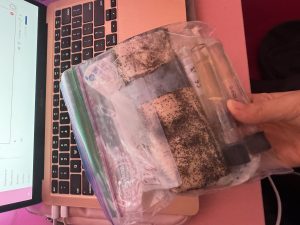11 Traditional Diagnostics and GIDEON
Procedure:
In this activity, I will perform traditional diagnostic and enzymatic tests on various microbial organisms using media and reagents. The tests include inoculating my samples on various agar plates such as Blood Agar, MacConkey Agar, Mannitol Salt Agar, and DNAse Agar, along with biochemical tests like Phenol Red Broth, SIM, Oxidase, Catalase, and Indole tests. Each test helps identify specific characteristics of the microbes, such as their ability to ferment sugars, produce enzymes, or form colonies on selective media. These tests are critical for distinguishing between different microbial species, aiding in the identification of pathogens.
After performing the tests, I will proceed with an online simulation of differential media and biochemical tests using the Virtual Interactive Bacteriology Laboratory. You’ll also work with the GIDEON worksheet to analyze and enter your results, which include data from tests like blood agar, MacConkey agar, SIM, and various enzymatic reactions. The activity culminates with interpreting your findings and using the GIDEON database to match your results with potential pathogens. This exercise helps develop practical diagnostic skills and enhances understanding of microbiological diagnostics, including how tools like GIDEON can assist in identifying diseases caused by various microorganisms.
Results:
I would have obtained the following results if I had completed the diagnostic experiment:
- Blood Agar Plate (BAP)
- If the microbe was able to grow on the blood agar, it would have been an indication that the organism can tolerate or utilize the nutrients in blood. Depending on the type of hemolysis, you might observe:
- Beta hemolysis (complete lysis of red blood cells, clear zone around colonies): This could suggest a pathogen like Streptococcus pyogenes.
- Alpha hemolysis (partial lysis, greenish discoloration): This could point to Streptococcus pneumoniae or Enterococcus species.
- Gamma hemolysis (no lysis): Non-hemolytic organisms, like Enterococcus faecalis.
- If the microbe was able to grow on the blood agar, it would have been an indication that the organism can tolerate or utilize the nutrients in blood. Depending on the type of hemolysis, you might observe:
- MacConkey Agar (MAC)
- Lactose fermenting organisms would produce pink colonies, indicating they can ferment lactose (e.g., E. coli).
- Non-lactose fermenters would produce colorless colonies, suggesting that the microbe cannot ferment lactose (e.g., Salmonella or Pseudomonas).
- Mannitol Salt Agar (MSA)
- Yellow colonies would indicate the organism can ferment mannitol, often seen with Staphylococcus aureus.
- Non-fermenting organisms would result in no color change or pink colonies (e.g., Staphylococcus epidermidis).
- DNAse Plate
- If the organism produces DNAse, you would observe a clear zone around the colonies, indicating the breakdown of DNA in the medium. A positive result could be seen with S. aureus.
- Phenol Red Broth (Glucose Fermentation)
- Yellow coloration with or without gas production would indicate that the microbe ferments glucose. If gas is present, it suggests a microbe that ferments glucose with gas production, e.g., E. coli.
- If no color change occurs, it indicates no fermentation.
- SIM Test
- Sulfide Production (H2S): A positive result would show blackening in the medium, indicating the microbe produces hydrogen sulfide (e.g., Salmonella).
- Indole Production: A positive test would show a red ring after adding Kovac’s reagent, indicating the microbe can degrade tryptophan into indole (e.g., E. coli).
- Motility: A positive result would show growth radiating from the stab line, indicating the organism is motile (e.g., Salmonella), while non-motile organisms would only grow along the stab line (e.g., Shigella).
- Catalase Test
- Bubbling after adding hydrogen peroxide indicates that the organism produces catalase (e.g., Staphylococcus species).
- No bubbling suggests the organism does not produce catalase (e.g., Streptococcus species).
- Oxidase Test
- A purple color indicates that the microbe is oxidase-positive, such as Pseudomonas or Neisseria.
- No color change indicates oxidase-negative organisms, such as Enterobacteriaceae.
GIDEON Identification
After entering test results into GIDEON, the database generates a list of potential pathogens along with a confidence score, indicating how well the results match known data. A high score suggests a likely identification, while a low score may require further testing. For example, based on catalase, oxidase, motility, and fermentation patterns, possible organisms like E. coli, S. aureus, or Salmonella could be identified. The experiment helps in understanding the microbe’s biochemical characteristics, allowing for confident diagnosis and recognition of GIDEON’s role in traditional diagnostics.

